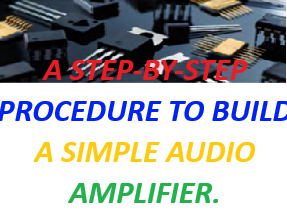CREATING COLLECTIVE AND DEMOCRATIC CLASSROOM FOR EFFECTIVE TEACHING AND LEARNING.

CREATING COLLECTIVE AND DEMOCRATIC CLASSROOM FOR EFFECTIVE TEACHING AND LEARNING.
Many teachers or facilitator today want to create what could be characterized as a “democratic” environment for learning.
Others aspire to have learning atmosphere that function as “learning communities.”
This trend toward seeking classroom structures that endeavour to empower learners rather than simply control them is an encouraging development.
The good news for these teachers is that over time and with effective leadership, any class can be a functional democratic society.
And with a little more time and a clear understanding of what it takes to empower learners to value and commit to the common good of the group, any class can begin to take on the characteristics of a community.
Both require a great deal of awareness of what is standing in the way of one’s success and a dedicated intention and commitment to doing what it takes to make it happen.
In doing so it is necessary to establish a social bond or contract, communal bond with your learners or students.
SOCIAL BONDS
- According to Scheff, 1997, “Social bonds or social contracts are explicit and implicit agreements made between individuals in any group to help clarify what they should expect from one another”.
- The group can be as small as two people or as big as the population of a country or, of course, even the planet.
- For example, we enter into an agreement with our governments in which we pay some taxes and can expect some services in return.
- Likewise, when we walk down the street, we have some confident that others will refrain from harming us if we refrain from harming them.
- In these examples, the agreements are fairly clear; however, there are times when what it means to fulfil our part of the bargain or what behaviour constitutes violating the social contract can be more ambiguous.
- As we know from living in a modern society, laws do not guarantee that citizens treat one another fairly or act as good democratic participants.
- In fact, laws are just the beginning of creating what could be called a well-functioning democratic society.
This is also true in the classroom or learning environment.
- Rules do not make a democratic classroom, no matter how well the teacher enforces them.
- A democracy is more.
- At the heart of a working democracy are well-defined collectively owned social bonds: the implicit and explicit agreements among the members of the collective that create mutual understanding and trust.
- The intentional development of a social contract (also called a behavioural covenant or bill of rights) can help clarify those agreements.
- A well-functioning social contract promotes a well-managed class and provides students with an invaluable education in democratic participation.
COMMUNAL BONDS
- Whereas social bonds answer such questions as; What must I do to fulfil my part of the social contract?
- Communal bonds answer the question, “What can I do to make the collective better?”
- Societal bonds are at the root of what make most of our daily interactions smooth and reasonable.
- Communal bonds more often reflect friend and family relationships and are at the root of why we feel part of something greater than ourselves.
- It is difficult to have sustainable communal bonds without well-functioning social bonds in place.
- As you begin to develop your vision for your ideal classroom and management style, clarifying the kinds of bonds you want operating in your classroom is useful.
- Social bonds are essential for any 1- or 2-Style classroom to create a sense of safety, clearness, and efficiency.
- But achieving more substantive levels of group cohesion, a high-functioning 1-Style classroom, and transformative outcomes requires fostering communal bonds among learners.
A CLASSROOM SOCIAL CONTRACT
- At minimum, a classroom social contract outlines how each group member will keep from infringing on the rights of the others.
- A more empowering social contract outlines what members can do to promote improvement for themselves and their class.
- The classroom contract exists as a set of rules, principles, boundaries, expectations, and consequences that govern the concrete document and abstract concept.
- It is preferable to write the concrete aspects of the contract clearly, simply, and positively.
- The power of the contract depends on how a class translates the abstract aspects of the contract into practical, accessible operational ideas and behaviours.
- Rules exist as words on paper or a whiteboard and remain just words, never becoming meaningful.
- Until they become a concrete and material part of the students lived experience, they will have little influence on behaviour.
- For those of us (especially the more practical minded) who tend to have great affection for rules and legalistic thinking, it is critical to shift our focus from the rule as written law to rules as values implying a larger purpose.
WHERE DOES THE SOCIAL CONTRACT EXIST?
- A social contract can begin as a document; however, the written document is not the contract.
- The social contract exists to the degree to which the stakeholders (teachers (facilitators), students (learners), and assistants) understand and commit to it.
- The knowledge component is foundational; no one cannot commit to something without understanding it.
- Likewise, if you do not commit to what you have ceremonially agreed to, you are not fulfilling your role, and consequently the social contract does not truly exist.
- Moreover, if the contract exists only in your head and not in your students’ heads, it does not exist.
- Finally, this point cannot be emphasized too strongly if the students view you as imposing the rules on them, the contract loses power and effectiveness.
- If the students see the ownership of the social contract as theirs it will be powerful and effective.
- In other words, to the degree that it exists within the hearts and minds of students and not as an imposition from their teacher, the contract exists.
Here are guide line for effective creating and applying social contracts in a classroom.
Decide on Terms for the Contract’s Precept
- You need terms to express the basic precepts of your contract.
- While what I call the basic principles are ultimately a matter of semantics, each of the assortment of possible options for these basic terms implies a somewhat different meaning.
- Choose the term that best represents the kind of thinking you want to define your contract.
List of the most frequently used terms:
- Rules
- Bill of rights
- Principles
- Policies
- Boundaries
- Expectations
It is certainly reasonable to consider using a combination of terms, such as rules, bill of rights, or principles for the few global pillars of the contract;
Procedures for the operational processes you need to have in place to help the class function smoothly; and expectations for the countless occasions when a shared understanding of what to do and how to act needs to be in place.
Develop a List of Basic Expectations
- No matter how organic, negotiated, or flexible your vision of the social contract is, you need some concrete pillars to anchor the broader contract.
- These rules, bill of rights, expectations, policies, or boundaries should be put in writing and made visible to all members of the classroom society.
- Keep in mind two suggestions that will help you down the road.
Make the list as short as possible no more than three to five items.
- Too many rules are difficult to remember and have the effect of making each item less powerful as more items are added
They should be stated positively.
- Our unconscious minds can understand only positive messages, so an item that states, “Do not talk when others are talking,” sends a confusing message to the unconscious.
Moreover, stating expectations negatively can have the effect of encouraging negative behaviour.
Restating the rule in positive terms eases the unconscious conflict and clarifies the expectation.
A more effective alternative phrasing would be something such as, “Be attentive to those who are speaking, and expect others to be attentive when you are speaking.”
Develop Consequences for Contract Violations
- Developing clear, logical, and related consequences for contract violations is essential to the success of any social contract.
- Even though many people use the two terms interchangeably, there is a significant difference between what constitutes a consequence and what constitutes a punishment.
- Logical and related consequences help students build cause-and-effect relationships between their thoughts and actions and the outcomes of those thoughts and actions.
- These lessons lead to ever-increasing levels of responsibility and promote students’ internal locus of control.
- Punishments lead to obedience at best, and more often to resentment and hostility.
- Few meaningful lessons are learned from punishments, and their use degrades the quality of the contract.
- Punishments externalize the causality of the event as the students associate the interventions with pleasing or displeasing the teacher rather than with the choices they made.
- Developing consequences as a class is an excellent way to promote higher levels of ownership and understanding.
- It will take time to help students understand the difference between punishments and consequences, but the distinction is a useful one to make.
- In addition, it will help clarify the nature and purpose of the social contract.
- The degree to which you have students involved in the development process is up to you.
However, keep in mind the trade-off.
- You want to maintain a sense of coherence and vision to the contract.
- That will come primarily from your ability to support ideas and outcomes that integrate well as a whole.
- Then again, more student involvement usually translates into more empowerment and buy-in.
- If you want to support student involvement, consider using an inductive process to accomplish this.
- Take the case of the class where the students begin to request going to the restroom more often than you feel they should, and you determine that their absence and moving in and out is distracting to the class.
- You might take the opportunity to brainstorm a policy with the students on how to solve “our” problem.
- If you want to guide the process toward what you feel is a sound idea, begin by offering a plan for them to evaluate and approve.
- Or you can have students choose an idea from those that they generated themselves.
- Once the class has voted a policy into place, you can make an assumption about the level of understanding and ownership they will have toward it.
- So, when that expectation is raised in whatever form, it will not be unanticipated or feel imposed.
- With very young students, you will need to provide a greater amount of assistance in the consequence development process, but it can still be a useful exercise.
Young students can have difficulty recognizing an appropriate level of severity and tend to think in terms of punishment.
- They will struggle with the notion that the consequences need to be logical and related.
- They will also abstract themselves from the possible misbehaviour.
- They often struggle to conceive that they may be the ones violating the social contract.
- As a result, when you ask for ideas from young students, you are often surprised at what they come up with.
- You might ask, “What should we do if someone comes back from recess late?”
- And the response might be, “They should be spanked,” or, “They should have to stay after school.”
- Again, it may be wise to offer alternatives and have students select from among them.
- This will promote ownership while supporting an outcome everyone can accept.
- A policy, rule, or consequence that is not working well represents an opportunity to improve the social contract and provide students with the opportunity to engage in a democratic decision-making exercise.
Students of any age can successfully participate in a class meeting if it is well organized.
These meetings have value to the extent that they are well structured and effectively led, and that students take them seriously.
Make the Social Contract as Conspicuous as Possible
The initial process of creating the basic rules, expectations, and consequences for contract violations should happen as soon as possible in the term.
And once it is in place, the social contract has a genesis.
But it will fade in memory if it does not become a living document.
It needs to evolve to meet the needs of its stakeholders and grow as the collective grows in maturity, since any social contract will exist only in the collective understanding of the participants.
This understanding begins with familiarity.
One idea is to use phrases from your contract as banners within the class.
Send a copy of the contract home with each student and have each parent and the student sign it, signifying that they have read and understood it
This practice can have many benefits
- It provides an opportunity for families to read the social contract, promoting their understanding of what you are trying to accomplish and their appreciation that your discipline system is proactive and positive.
- It also, allows you to refer to the fact that the student signed the contract. This may be valuable when they feel tempted to distance themselves from their agreement.
An effective strategy to promote understanding of the written content of your social contract is to take time to discuss it and then quiz the students on it.
Why expect the students to pass the social contract contents quiz before they are able to enjoy the privilege of taking part in the other aspects of the class?
It may be as simple as requiring that the students are able to list the class rules and achieve a 100 percent score before they are allowed to use a specifies piece of classroom equipment (a computer, gym equipment, lab materials, puzzles, library books, and so forth).
However, use the idea of a quiz only if you judge that the students need help buying into the social contract.
Although the written word can be a powerful tool in promoting a social contract, a good number of effective social contracts exist almost entirely on an implicit level as shared understandings between the teacher and the students.
This is possible because the majority of the means by which the social contract is communicated are through teacher-student interactions.
Students will respond to the degree that an expectation is clear and associated positively.
Therefore, promote your social contract with effective methods and avoid ineffective methods.
Negative recognitions, lectures, put-downs, punishments, personal praise, and public shaming weaken the contract and undermine the relationship between the teacher and the students.
Practice and Teach the Expectations of the Class Contract
- If a procedure needs to be improved, practice it.
- If the social contract requires a new set of skills, teach and model them.
- To promote a practical understanding of the contract, make the implicit aspects more explicit.
- If your contract has words such as respect, responsibility, attention, attitude, cooperation, effort, and encouragement (and it is desirable that it does), you must make those abstractions concrete and personal, or they will remain abstractions.
- So, use practical behaviour to help students inductively master the conceptual realities.
- Positive recognitions of behaviour are both concrete and personal.
- They teach concepts quickly if you help students recognize the connection.
How you deal with contract violations will have the most significant effect on the integrity of the social contract.
When you observe behaviour that violates the agreement, you have three choices.
Only one is helpful.
The other two will quickly undermine the integrity of the contract.
- If you take action, follow through, and hold the students accountable, the contract is shown to have efficacy and integrity.
- If you ignore the behaviour or if you are negative (for example, by becoming disappointed, shaming the student, or recognizing the behaviour publicly), it shows the contract to be weak and randomly applied.
- When it is inconsistently applied, it becomes about the teacher (the external locus of control) and not about the choice of the student (internal locus of control), and therefore loses power.
Clarify Expectations and Roles
- The roles of the teacher and students within the social contract may appear obvious.
- However, you might be surprised at how much students vary in their view of their roles in the contract and what they view as your role.
- Depending on the style of leader you desire to be, you will need to remind the students what your role is, what it is not, and what their roles are and are not.
- Students will likely bring in a composite of the roles that they adopted from past classes and their home life.
- And they will assign you a role that mirrors that which they have experienced from others.
- Again, do not stay in thoughts of disappointment or insult.
- Be proactive.
- Continuously clarify the roles within the social contract.
- As the expectations become more familiar and concrete to students, you can begin to use language that tests the degree to which the expectations have been internalized.
- Again, clarifying questions are helpful in assisting the students to move from the learning stage to the performance stage.
Build Community Relations
The social bonds among the members of the class will become stronger if they are supported by communal bonds.
Fundamentally, a basic social contract does not require the need for interdependence or a commitment on the part of the students to the common good, yet building those qualities into the logic of the overall contract will bring an added level of vitality to classroom relationships.
Applying the following three principles will go a long way in promoting the communal bonds in your class:
- Promote respect, and be intolerant of disrespect.
- Promote teamwork and mutual interdependence.
- Show caring and pride in the groups’ accomplishments.
Shift Ownership of the Contract from Yourself to the Collective
- No matter if your preference is for a more teacher-centered class (2-Style orientation) or a more student-centered class (1-Style orientation), your contract will become stronger to the degree that the ownership of it resides with the students rather than you.
- If the students come to view the contract as something that you are imposing on them, it will have a limited effect.
- However, if they view it as something that functions to make their class more effective and more emotionally safe and they appreciate the feeling of responsibility that it promotes, it will grow in efficacy and integrity.
- To help promote ownership of the contract, gradually shift the focus of your language from the kinds of expected behaviour to the value for one’s self and the group when that behaviour is exhibited.
- Especially if you are interested in developing a student-centered classroom, helping students appreciate the values of consideration, self-discipline, and personal responsibility are critical to promoting a living and internalized social contract and will lead naturally to the development of communal bonds.
Join Enlighten Knowledge WhatsApp platform.
Join Enlighten Knowledge Telegram platform.
Follow our:
FACEBOOK PAGE.





